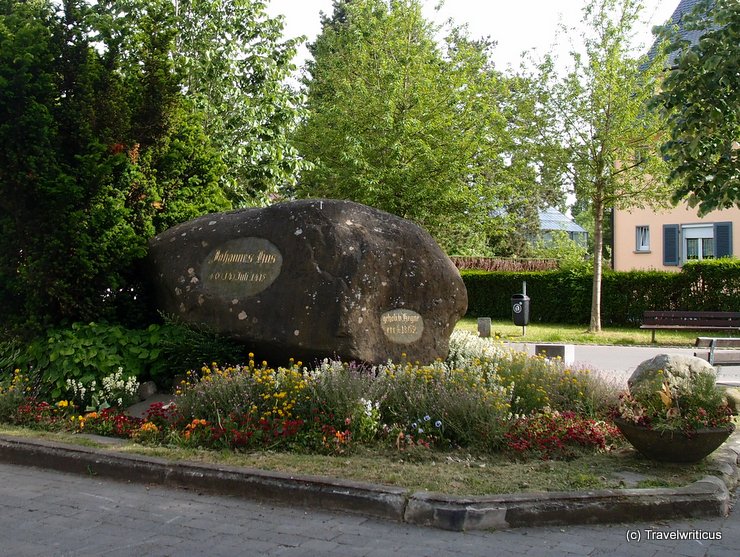
The stone of Hus (Hussenstein) marks the supposed spot where Jan Hus was burned at the stake on 6 July 1415. Though the black boulder was named after Hus it also reminds of another victim burned at the same spot: Jerome of Prague.
You only see what you know (Goethe)

The stone of Hus (Hussenstein) marks the supposed spot where Jan Hus was burned at the stake on 6 July 1415. Though the black boulder was named after Hus it also reminds of another victim burned at the same spot: Jerome of Prague.
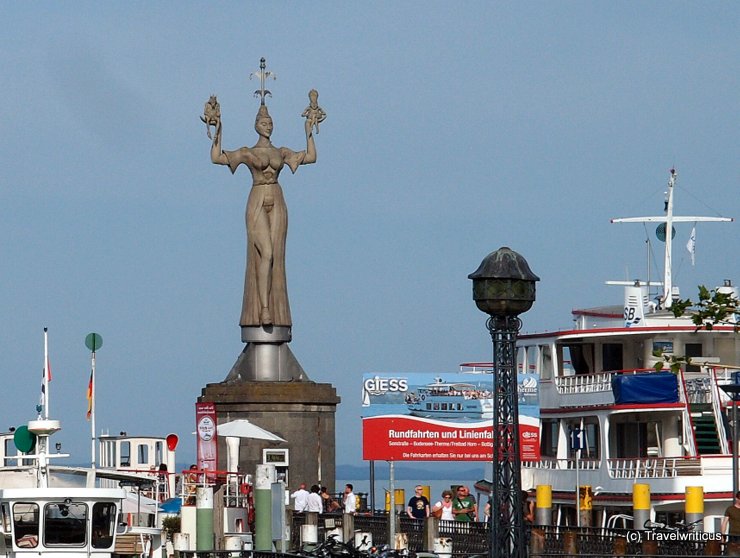
The Imperia in the harbour of Konstanz (Constance) on Bodensee (Lake Constance) is a satirical reminder of the Council of Constance (1414-1418). The statue, created by Peter Lenk in 1993, turns slowly on its own axis and presents an emperor and a pope in its raised hands. [German]
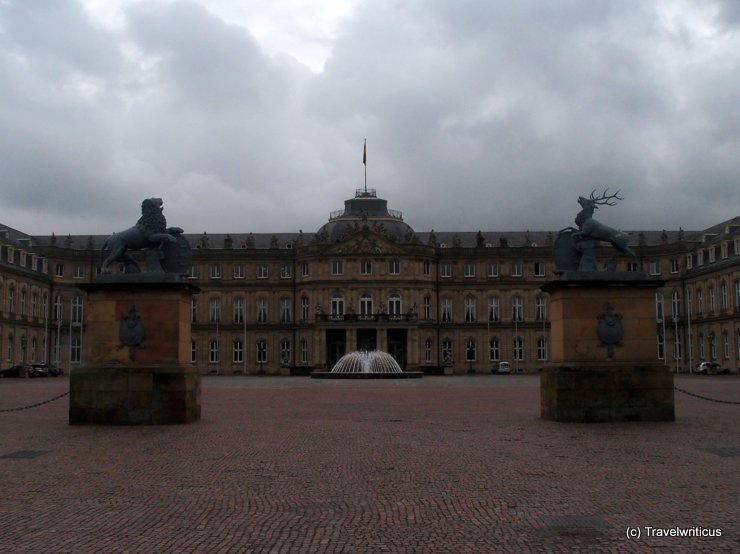
The Neues Schloss (New Palace), built in the late Baroque style, served as the residence of the Kings of Württemberg.
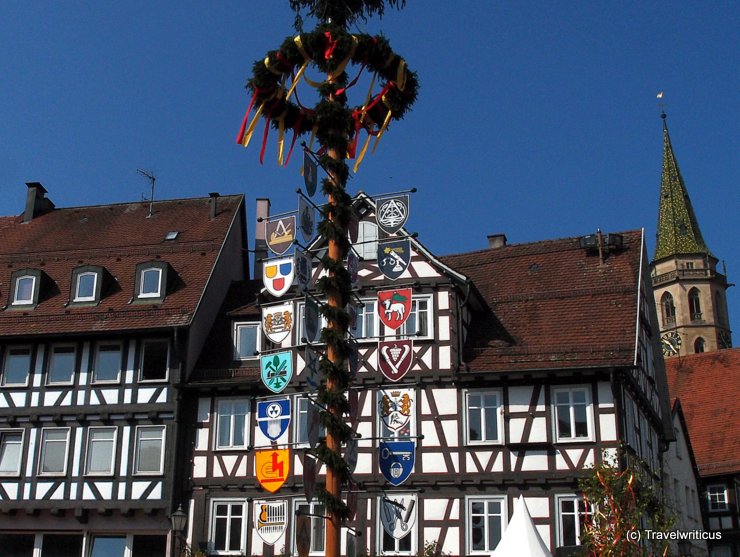
The photo depicts a maypole at the marketplace of Schorndorf. The signs placed at the maypole represent different industries working in the city. Are there similar maypoles in your region?
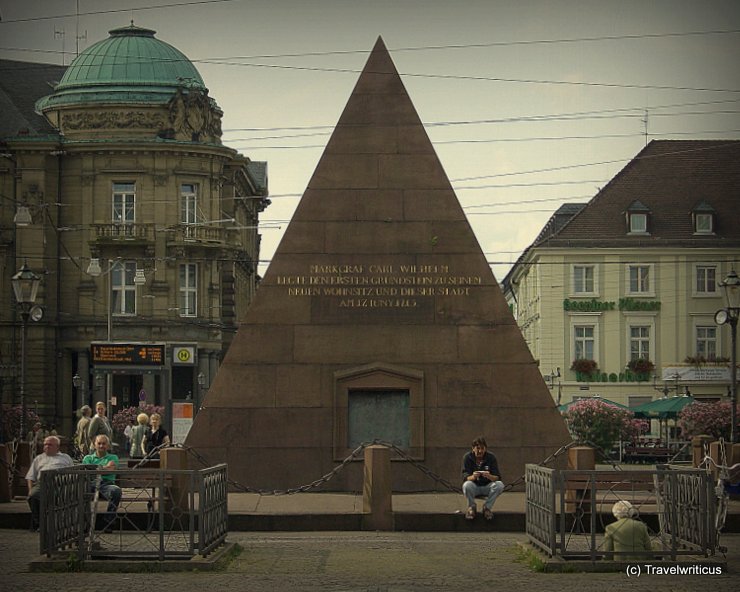
The Karlsruhe Pyramid was constructed between 1823 and 1825 according to plans by architect Friedrich Weinbrenner. It commemorates Karl III Wilhelm Margrave of Baden-Durlach, the founder of the planned city of Karlsruhe. [German]
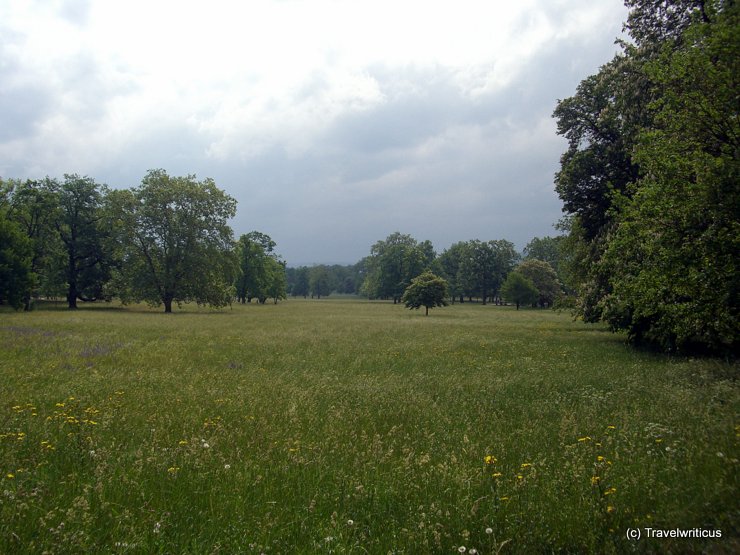
The following was a big surprise on my urban walk through Stuttgart. I came across a fodder meadow (Fettwiese) inside the city. The hay from this meadow is for the animals of a nearby zoo named Wilhelma.
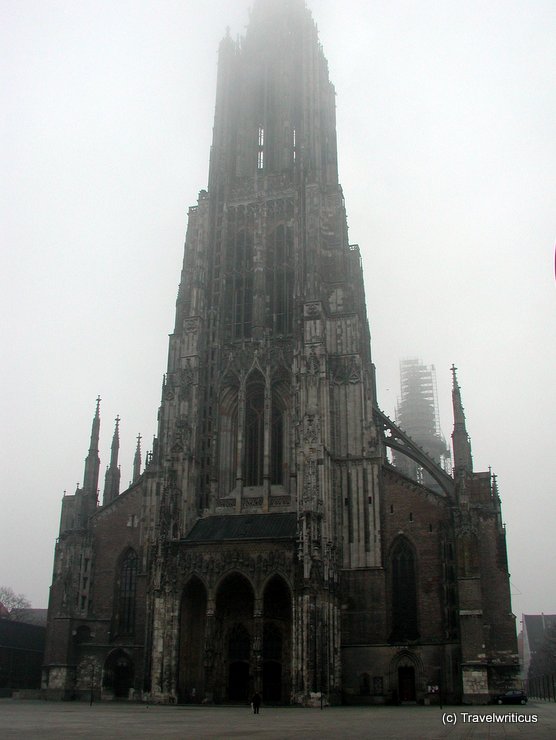
Though Ulm Minster (Ulmer Münster) is built in Gothic style it wasn’t finished before 1890. With its steeple measuring 161.5 metres it is the tallest church in the world. Visitors are allowed to climb up to a height of 143 m.
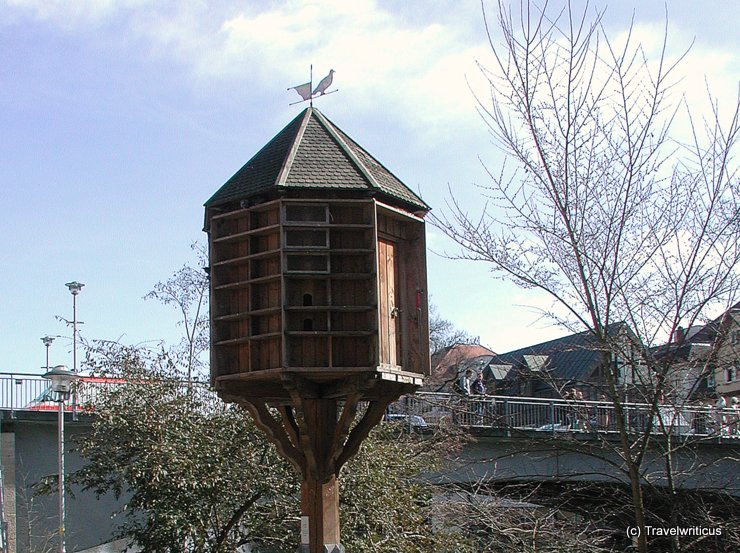
A dovecote seen in Tübingen, Germany.
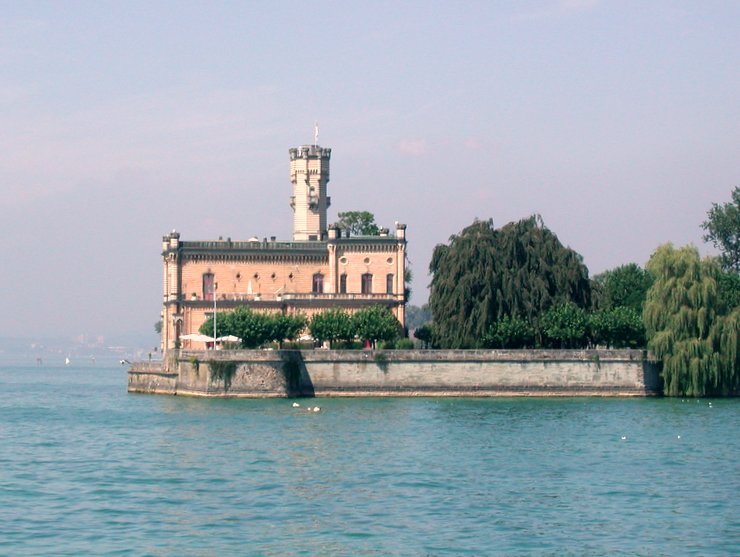
Montfort Castle (Schloss Montfort) is a lakeside palace next to Lake Constance (Bodensee). It was built for King William I of Württemberg in 1867. I took this photo on a boat trip from Lindau to Friedrichshafen and was especially impressed by the Moorish architecture of the palace.